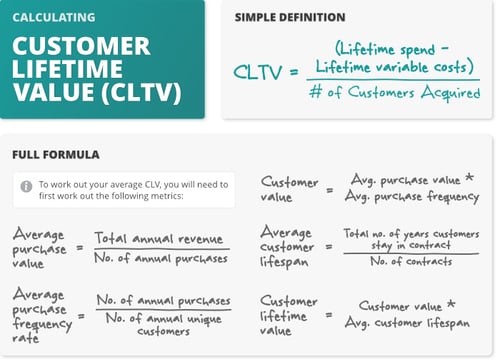Building a technology company is not an easy feat. You need to constantly fill your demand pipeline and turn your leads into recurring customers. With people able to cancel their subscription anytime, driving growth remains the bottom line of every SaaS business.
In this blog post, we will look at seven key metrics that SaaS companies need to track on their marketing dashboard.
1. Customer Acquisition Cost (CAC)
An essential KPI for SaaS companies, the CAC represents the true cost of gaining a new paying customer. It includes money spent on sales, marketing, advertising and commission, as well as customer onboarding expenses. You divide this cost by the number of deals closed to get your CAC. Because it can be such a complex calculation, some firms apply AI to get a more comprehensive view of CAC.

2. Return on Ad Spend (ROAS)
Most SaaS marketers want to measure ROAS to help them gauge the effectiveness of ad campaigns. This is calculated by taking revenue generated by the ads over the cost of running these ad campaigns. Combined with customer lifetime value, insights from ROAS will give you a glimpse of what your future budget and marketing strategy will look like.
3. Customer Lifetime Value (CLTV)
CLTV tracks the average amount of money your customers pay during their relationship with your company. It is an important yet most complex metric but knowing this will help the business determine their investment in CAC. If you’re spending more on acquisition than what you anticipate earning from the customer in revenue, you may be shortening your runway.

4. Lead to Customer Ratio
This measures how well you are generating sales-ready leads in a given period of time, or rather how many leads turn into paying customers. It is considered one of the most critical KPIs for SaaS companies because it enables them to assess the efficiency of their marketing and sales funnel, as well as their potential growth forecast.
5. Monthly Recurring Revenue (MRR)
Small and large SaaS businesses alike would benefit from knowing what their MRR figure is, as well as their Annual Recurring Revenue (ARR). It is a simple figure to derive because it aggregates all revenue the business receives from paying customers each period, regardless of pricing plans and billing cycles.
6. Average Revenue per User (ARPU)
Your ARPU - or ARPA (Average Revenue per Account) - tells you how much money the business makes for each person using its service. It is a valuable KPI for tracking the financial value of each customer to the business, particularly when you compare new with existing customers, and a helpful analytics KPI for SaaS companies with large user bases.
7. Customer Churn
Measuring churn, the last metric, is a top priority for SaaS marketers, as the industry suffers from high levels of customer movement. By measuring churn for specific products, app bundles or price points, you can get an insight into how satisfied customers are with their particular purchase, and how many might be leaving because of them.

Collecting Data to Measure These Metrics Accurately
Underpinning many of these KPIs are the technical processes that carry out integration of all your data sources. As some of these metrics including ROAS and CLTV are hard to measure due to an omnichannel strategy, many companies need specialized solution that can calculate the true value of their ROI.
With the help of advanced marketing analytics platforms, SaaS companies can amalgamate large sets of data, harmonize and transform them into easily digestible intelligence. Cars.com, a leading online marketplace based in Chicago, IL, for instance, found the true ROAS after connecting their buyer intent data with ad spend through Adverity.
Conclusion
SaaS metrics are powerful performance indicators to help evaluate marketing campaign performance and business growth. Some are easy to calculate while others are complicated and need to be customized based on the company’s demand generation funnel and marketing strategies. With the SaaS industry becoming increasingly competitive, having the right tools in your data stack to measure your growth will help you stay ahead of your competition.
Want to take your data-driven marketing to the next level with a powerful dashboard?
Download our free eBook and learn what your marketing dashboard could look like.







